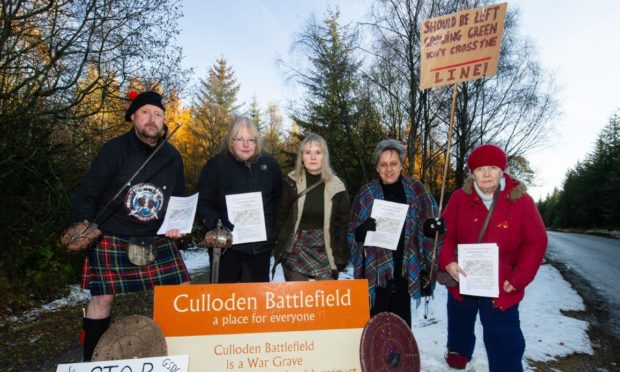Controversial plans for a holiday village in Culloden Moor have been rejected for a second time by Highland councillors.
Inverness Paving Ltd’s plans for a change of use from an equestrian centre at Tree Top stables in Faebuie to a leisure facility with 13 lodges, café/shop, laundry and restaurant were first rejected in May 2019, but reappeared a few months later with some alterations.
Full new plans were submitted in May this year, and attracted renewed protests and objections.
According to historians, the site was the staging ground for government troops preparing to do battle against the Jacobite army.
The first application was refused by the council under delegated powers on the grounds that it would not ‘preserve, enhance or develop’ the site, citing both the Highland-wide development plan and the Culloden Muir conservation area.
Statutory consultee Historic Environment Scotland, has not objected, stating the development will not change the character of the battlefield.
At the south planning meeting, councillors pointed out that the changes in the new plans were minimal, concerning the siting of lodges and access paths leading to them.
They raised numerous areas of concern, including road safety, tree management and ‘development creep’ in the extended battlefield area.
Local member Carolyn Caddick said: “All the information that’s come forward from the applicant is not suggesting anything different from the last application.
“There have been three to four thousand objections, including the two community councils, and Scottish ministers say if we move to approve they may call it in.
“This is a huge development where there should be no development.
“It will compromise and have a significant impact on the battlefield, a site of international and national importance.”
She went on to second a motion by councillor Ron MacWilliam to refuse the application based on a raft of policy contraventions.
Mr MacWilliam said: “This has got to stop somewhere. This battle took place over a wide area, you have to reasonable about where you’re allowed to build and not build, and we keep going back over it.
“I recognise the need for economic growth and the provision of tourist facilities, but this is a battlefield war grave, a place of quiet and we need to keep it intact.”
Inverness Paving has been contacted for comment.
Core battlefield owners, the National Trust for Scotland welcomed the decision, and called for a national conversation about Culloden.
Phil Long, NTS chief executive said: “This is an excellent and wise decision by Highland councillors and we commend them for it.
“The scheme was rejected once before and this latest application made no material change that would have lessened its baleful impact upon the wider historic battlefield within the Conservation Area.
“Through our Culloden 300 consultation, which received enormous public support, we’ve argued that the time has come to have a national conversation about Culloden if we are to cease the seemingly endless tide of speculative development applications.
“We have to come together and find a middle way that does not prevent reasonable and appropriate development while preserving the essence of this sacred, internationally important place.”
Around 3,000 people took part online and in person in the consultation which was intended to establish how people wanted the battlefield to look in 2046, 300 years on from the conflict.
Of the participants, 68% came from Scotland, showing a strong national concern for the future of the battlefield, with a significant response from the of the UK (11%) and the wider world (21%).
Almost 40% of respondents specifically highlighted the issue of development in the area of the battlefield, with many expressing concerns about its long-term impact.
The Culloden 300: Living With The Battlefield report is available at https://www.nts.org.uk/stories/public-plead-to-protect-culloden
